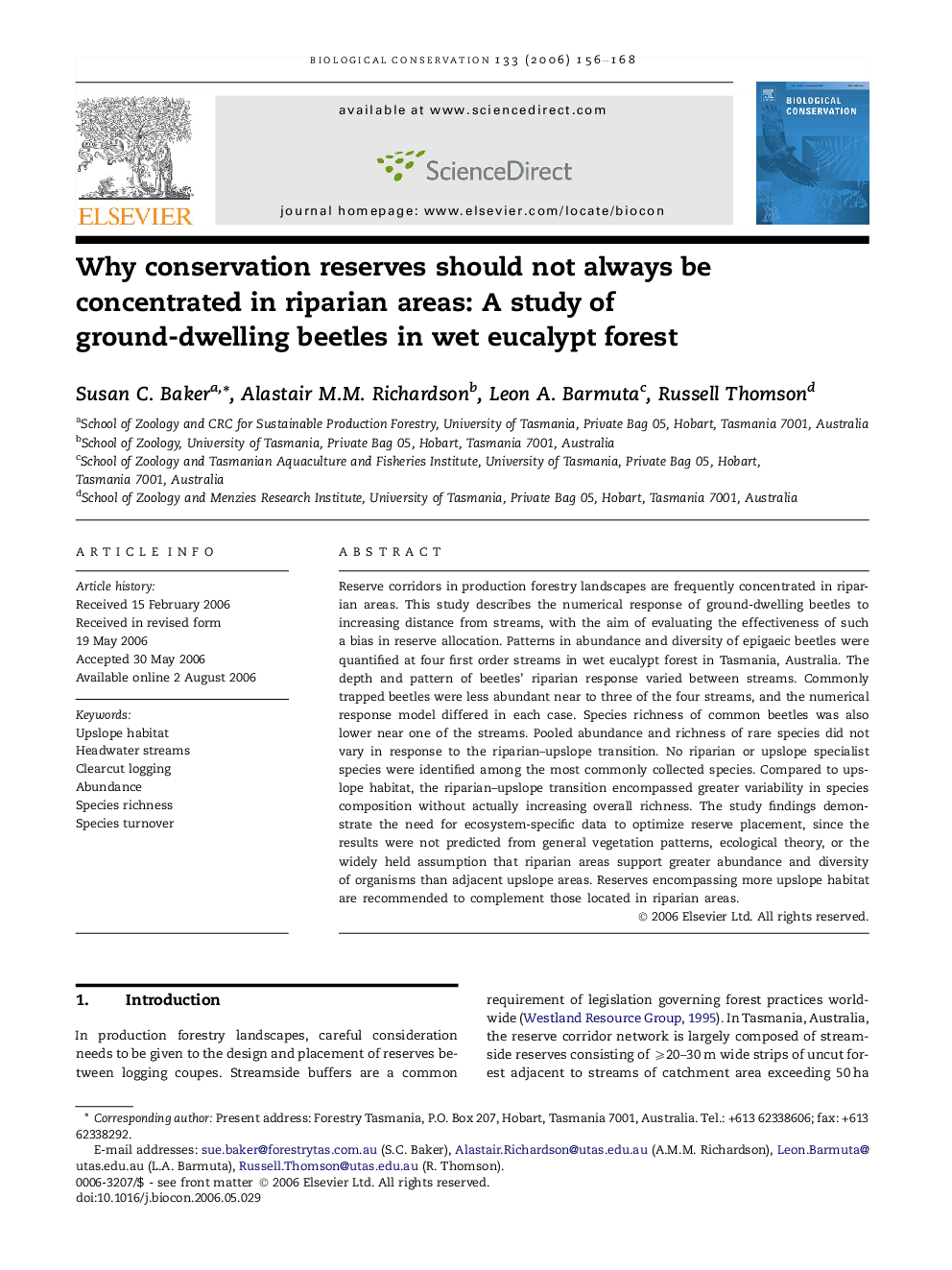| Article ID | Journal | Published Year | Pages | File Type |
|---|---|---|---|---|
| 4387598 | Biological Conservation | 2006 | 13 Pages |
Reserve corridors in production forestry landscapes are frequently concentrated in riparian areas. This study describes the numerical response of ground-dwelling beetles to increasing distance from streams, with the aim of evaluating the effectiveness of such a bias in reserve allocation. Patterns in abundance and diversity of epigaeic beetles were quantified at four first order streams in wet eucalypt forest in Tasmania, Australia. The depth and pattern of beetles’ riparian response varied between streams. Commonly trapped beetles were less abundant near to three of the four streams, and the numerical response model differed in each case. Species richness of common beetles was also lower near one of the streams. Pooled abundance and richness of rare species did not vary in response to the riparian–upslope transition. No riparian or upslope specialist species were identified among the most commonly collected species. Compared to upslope habitat, the riparian–upslope transition encompassed greater variability in species composition without actually increasing overall richness. The study findings demonstrate the need for ecosystem-specific data to optimize reserve placement, since the results were not predicted from general vegetation patterns, ecological theory, or the widely held assumption that riparian areas support greater abundance and diversity of organisms than adjacent upslope areas. Reserves encompassing more upslope habitat are recommended to complement those located in riparian areas.
